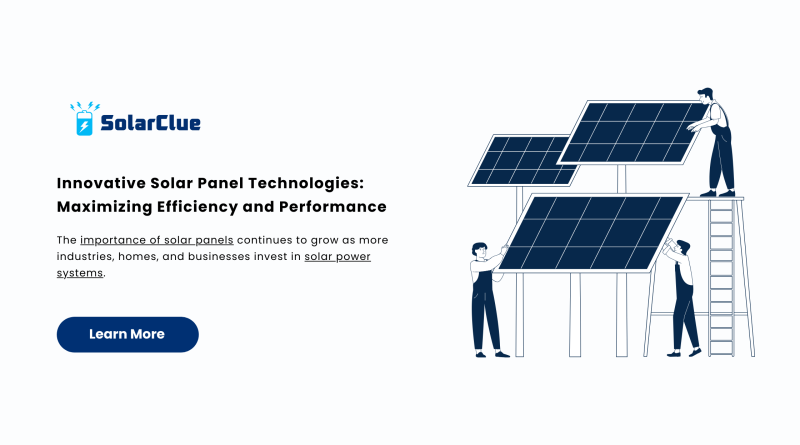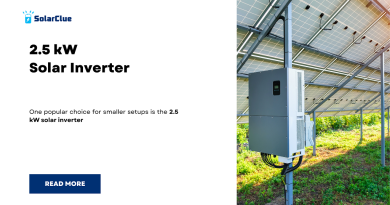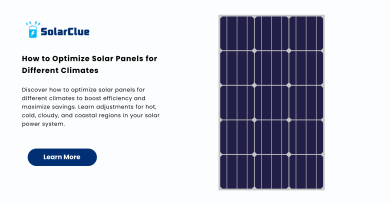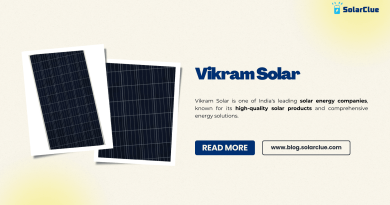Innovative Solar Panel Technologies: Maximizing Efficiency and Performance
Solar energy has become a key player in the global shift toward renewable energy, with new solar panel technologies emerging to enhance performance and sustainability. The importance of solar panels continues to grow as more industries, homes, and businesses invest in solar power systems. As demand increases, innovation plays a vital role in making solar panels more efficient, durable, and affordable.
In this guide, we’ll explore the most recent advancements in solar panel technology, discuss the best solar panel options for residential and commercial use, and highlight the benefits of working with top solar panel companies.
Table of Contents
- 1 Latest Innovations Transforming Solar Panel Technologies
- 2 The Growing Importance of Solar Panels in Renewable Energy
- 3 Technological Advancements Enhancing Solar Panel Performance
- 4 Which Solar Panel Is Best for Home Use?
- 5 Key Factors to Consider
- 6 Benefits of Installing Solar Panels for Home Use
- 7 How to Maintain and Optimize Solar Power Systems
- 8 Challenges and Future Trends in Solar Panel Technologies
- 9 Conclusion
- 10 FAQs
Latest Innovations Transforming Solar Panel Technologies
The solar industry has witnessed rapid advancements in technology. These innovations are transforming how solar panels generate and store energy, paving the way for more cost-effective and powerful solutions.
Bifacial Solar Panels: Doubling the Power Output
Bifacial solar panels represent a significant leap forward in efficiency. Unlike traditional panels, which capture sunlight on only one side, bifacial panels collect light from both the front and back surfaces. This technology is especially effective in open spaces with reflective surfaces like sand, snow, or rooftops, where additional sunlight can bounce onto the rear side of the panel.
As a result, bifacial solar panel technologies can increase energy production by up to 30%, making them ideal for both commercial and residential solar power systems.
Thin-Film Solar Panels for Flexible Applications
Thin-film solar panels are designed for flexibility and lightweight use, which makes them perfect for unconventional installations. Made from materials like cadmium telluride or amorphous silicon, these panels can be applied to curved surfaces such as vehicles or building facades.
Although their efficiency is generally lower than crystalline panels, thin-film technology excels in low-light conditions, maintaining energy production even on overcast days. For eco-conscious homeowners seeking adaptable solar panel for home solutions, thin-film is a versatile option.
Perovskite Solar Cells: The Next Frontier
Perovskite solar panels are at the forefront of research in solar technology. Known for their high efficiency and low production costs, perovskite cells have shown remarkable potential in laboratory tests, reaching efficiency levels comparable to the best monocrystalline panels.
These breakthroughs could revolutionize the industry by making solar power systems more accessible and affordable without sacrificing performance.
The Growing Importance of Solar Panels in Renewable Energy
The global push for renewable energy is placing solar panels at the center of sustainability strategies. Governments and industries alike are investing in solar infrastructure to reduce reliance on fossil fuels and lower carbon emissions.
For homeowners, installing a solar panel for home use not only supports environmental goals but also offers financial benefits. Solar energy reduces monthly electricity bills and provides long-term savings, making it a smart investment in energy independence.
Technological Advancements Enhancing Solar Panel Performance
Recent developments in solar panel technologies have improved not only energy efficiency but also system durability and monitoring capabilities. These advancements ensure that solar power systems generate maximum output, even under challenging conditions.
High-Efficiency Photovoltaic Cells
Modern photovoltaic cells are designed to optimize light absorption and energy conversion rates. By using advanced materials and manufacturing techniques, solar panels today can achieve higher efficiency ratings, reducing the number of panels needed for the same energy output.
Smart Solar Panels with Integrated IoT
The integration of Internet of Things (IoT) technology is a game-changer for solar panel companies. Smart panels come with built-in sensors and connectivity, allowing for real-time performance monitoring. This innovation helps users identify potential issues early and optimize system performance.
Enhanced Durability for Extreme Climates
New protective coatings and weather-resistant materials are improving the longevity of solar panels. These advancements ensure that panels can withstand extreme conditions, such as high heat, heavy snow, and strong winds, without compromising performance.
Which Solar Panel Is Best for Home Use?
Selecting the best solar panel for home use depends on various factors, including budget, efficiency needs, and climate. Homeowners often face the choice between monocrystalline and polycrystalline panels, each with its own advantages.
Monocrystalline vs. Polycrystalline Panels
Monocrystalline panels are known for their high efficiency and sleek appearance. They perform exceptionally well in areas with limited space or high sunlight exposure. On the other hand, polycrystalline panels are more affordable and can be a practical choice for larger installations with moderate sunlight availability.
Key Factors to Consider
When choosing a solar panel for home, factors such as energy efficiency, durability, and cost should guide your decision. It’s also wise to compare offerings from leading solar panel companies to ensure you’re getting cutting-edge technology and reliable warranties.
Benefits of Installing Solar Panels for Home Use
Investing in solar panels for your home brings multiple benefits. Not only can you reduce your dependence on traditional energy sources, but you’ll also enjoy significant savings on electricity bills. Over time, these savings can offset the initial installation cost, delivering a strong return on investment.
Additionally, solar power systems can increase the value of your property. Buyers are increasingly looking for energy-efficient homes, and solar installations can make your property more attractive in the real estate market.
How to Maintain and Optimize Solar Power Systems
Maintaining your solar power system is crucial to ensure long-term efficiency. Regular cleaning and inspections can prevent dirt buildup and mechanical issues that may reduce performance.
Many homeowners also take advantage of system monitoring software, which provides real-time data on energy production and usage. By keeping track of these metrics, you can make adjustments to maximize your system’s output.
Challenges and Future Trends in Solar Panel Technologies
While solar panel technologies have made tremendous strides, challenges still remain. Energy storage is a key area of focus, as solar panels only generate electricity during daylight hours. Innovations in battery storage systems are essential to overcoming this limitation.
Looking ahead, researchers are exploring ways to further improve efficiency and reduce manufacturing costs. With continued investment in research and development, solar panel technology is set to become even more accessible and impactful in the fight against climate change.
Conclusion
Innovations in solar panel technologies are reshaping the renewable energy landscape. From bifacial and thin-film panels to perovskite cells, these advancements are making solar power systems more efficient and reliable than ever before.
For homeowners and businesses alike, now is the perfect time to invest in solar energy. By selecting the best solar panel for your needs and maintaining your system properly, you can enjoy long-term benefits while contributing to a greener future.
To learn more about solar panels and explore top solutions, visit SolarClue.
FAQs
1. Which solar panel is best for home use?
The best solar panel for home use typically depends on efficiency, space availability, and budget. Monocrystalline panels are ideal for high efficiency, while polycrystalline panels offer a more cost-effective solution.
2. How do bifacial solar panels improve efficiency?
Bifacial panels capture sunlight from both sides, increasing energy output by utilizing reflected light from surfaces like rooftops or the ground.
3. What are the benefits of installing solar panels at home?
Homeowners can reduce electricity bills, increase property value, and contribute to environmental sustainability by installing solar panels.
4. How long do solar panels typically last?
Modern solar panels can last 25 to 30 years with proper maintenance, retaining up to 80% of their efficiency over time.
5. What factors should I consider when choosing a solar panel company?
Consider factors such as technology, warranties, customer reviews, and the company’s experience in the industry.




